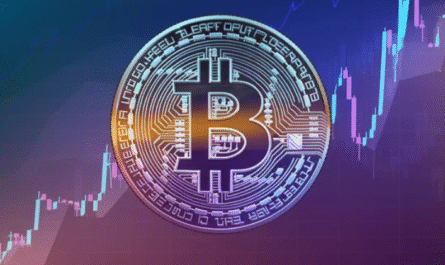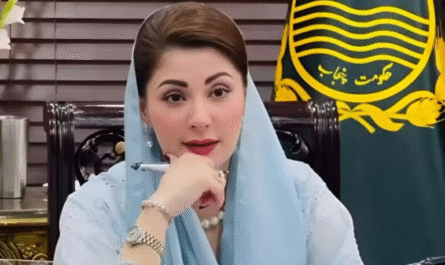Pakistan’s currency market has entered a state of turbulence, with the Pakistani rupee trading nervously near Rs 287 per US dollar and approaching a staggering Rs 390 per British pound in the parallel (open) market. These levels signal growing pressure on the rupee, raising alarm bells for importers, export‑oriented businesses, and monetary policymakers.
🇬🇧 Rupee on the Verge of Rs 390/£
Dealers in informal markets report that the rupee is hovering close to Rs 390 against the pound, though official mid-market instruments like Xe.com peg the rate around Rs 383.6—with recent highs pushing above Rs 386.3 . In the absence of robust interventions, market mechanics drive the gulf between open-market and inter-bank rates ever-wider.
💵 USD–PKR: Nearing Rs 287
Officially, the mid-market USD–PKR rate is about Rs 283.0, with incremental daily depreciation—around 0.25% on June 16—reflecting prevailing volatility . However, in the open market, rates commonly escalate to around Rs 287/USD, highlighting persistent stress and demand-side strain .
⚙️ What’s Fueling the Slide?
Several structural pressures are converging to weaken the rupee:
- Chronic Current Account Deficit
A sustained trade imbalance drains FX reserves. Liquidity stress makes continuous defense of the rupee untenable. - Weak Foreign Reserves
SBP’s reserves are thin after repayment obligations and low inflows—reducing capacity for market intervention . - Global Dollar Strength & GBP Pressure
Sterling gains and US dollar strength, buoyed by global demand, push other currencies, including PKR, lower . - Speculation & Market Panic
With thin liquidity, speculative traders in open markets can significantly sway local prices. Weak confidence spills into a vicious spiral. - Limited Policy Tools
With political instability and fiscal constraints, the government is strapped for effective policy responses. International support is uncertain.
🎢 Inter-Bank vs Open-Market: A Widening Chasm
- Inter-bank (official): Rs 283–283.5/USD, Rs 383–386/GBP.
- Open-market (parallel): Rates rise to ≈ Rs 287/USD and ≈ Rs 390/GBP, typically 1–3% higher than the official rate .
This gap complicates import planning, remittances, and currency trading—creating uncertainty for businesses and households alike.
💡 Impacts on Everyday Life & Business
📦 Imports
A weaker rupee amplifies costs for fuel, raw materials, machinery, and medicine—driving up inflation and squeezing companies.
🍅 Consumer Prices
From groceries to household goods, import-based inflation becomes inevitable, adding economic strain for households already grappling with rising costs.
🚗 Remittances
While exporters and overseas Pakistanis benefit from a weaker rupee (their USD remittances convert to more PKR), inflationary consequences offset some gains for domestic consumers.
🏦 Monetary Policy
To curb inflation and defend the currency, SBP may need to hike rates or tighten liquidity—measures that could stifle growth in an already fragile economy.
🏛️ Policy Tools & Options
- SBP Intervention
Continue selling limited reserves to cushion sharp rupee falls—but sustainability is questionable without fresh inflows. - Tightening Monetary Policy
Higher interest rates might attract foreign capital but risk increasing domestic borrowing costs. - IMF & External Funding
Securing a new IMF tranche or similar international aid could stabilize reserves and confidence—but remains uncertain . - Capital Controls
Measures like limiting FX trading might slow rupee depreciation—but could harm investor sentiment and remittance flows. - Market Discipline
Structural reforms—enhancing exports, boosting tax revenues, and reducing import dependency—offer long-term sustainable solutions.
🌍 Historical & Structural Context
- Managed float since 1982: Rupee has continuously drifted downward over decades, occasionally punctuated by sharp devaluations.
- Recent crises: Post-2022, PKR lost nearly half its value—driven by floods, fiscal stress, and political instability .
- Black market crackdowns in 2023 briefly stabilized rupee but didn’t solve structural imbalances .
🔮 Outlook: What Comes Next?
Forecasts hint at continued rupee weakness:
- Fitch Ratings predicts rupee weakening to Rs 285/USD by June-end, and Rs 295/USD by mid‑2026 .
- If “open market chaos” spirals, Rs 290–300/USD becomes increasingly likely in coming months.
- Sterling pressure may push rupee well above Rs 390/£, barring intervention or a shift in GBP trends.
📝 Summary Table: Key Exchange Rates
| Market | USD / PKR | GBP / PKR |
|---|---|---|
| Inter-bank | Rs 283–283.5 | Rs 383–386 |
| Open-market | Rs 287 | Rs 390 (≈) |
🛠️ What This Means for You
- Importers: Lock in deals early or hedge currency exposure to manage cost spikes.
- Remitters: Consider timing transfers when volatility eases—or use official channels aligned with inter-bank rates.
- General public: Stay aware—fuel, food, and utility prices may continue to creep upward as the rupee weakens.
- Policymakers: A decisive IMF deal, policy clarity, and credible reforms could help stabilize sentiment and currency markets.
✅ Final Word
Pakistan’s rupee is experiencing acute pressure in both open and official markets—approaching Rs 287/USD and Rs 390/GBP in informal trading—fueling inflation and financial strain. While short-term relief may come from SBP intervention or external aid, sustainable stability demands structural economic reforms, improved fiscal discipline, and consistent policy.
As volatility continues, individuals, businesses, and policymakers must stay alert: this currency turbulence affects everything—from your grocery budget to macroeconomic stability.



